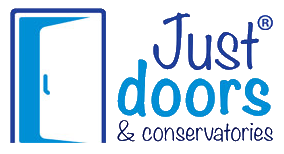Why Choose a Roof Lantern
Why Choose a Roof Lantern
Good home design keeps homes homely and helps happy families live well. When people spend more time indoors, it becomes more and more important to make the right home refurbishment and extension choices. Rooflights offer domestic improvements from the top down, shedding light on gloomy rooms and creating warm, spacious spaces. However, just as roofs vary wildly from house to house, roof light designs vary too. To find out why so many people choose a roof lantern for their homes, it’s worth looking at the alternatives and weighing up the pros and cons.

Roof Glazing Options
All roof lanterns are roof lights, but not all roof lights are roof lanterns. In fact, ‘roof light’ is a broad term for a variety of roof glazing options, from structural glass roofs to light tunnels and skylights. The latter option, skylights, are the most common roof light option.
Essentially skylights are an extra window built in line with the roof gradient. Either fixed, centreline or top hung, skylights offer a simple roof light fix. As they are parallel to the roof, they often end up invisible from the curb level. The flat glass can also suffer weathering, facing runoff from the surrounding tiles. Their design, while saving time upfront, can cost time later on with tricky maintenance and cleaning requirements.
What is a Roof Lantern?
Skypod roof lanterns take space, light, and architectural improvement to a higher degree than other roof light designs. With a glazed pyramid or elongated pyramid structure, roof lanterns add extra dimensions to home improvement. The word ‘lantern’ comes from the Ancient Greek ‘to shine,’ and the Oxford English Dictionary defines lanterns as tools for ‘containing and protecting light.’ Capturing triple the light of a standard window, roof lanterns are a shining example of modern design.
Maximising Natural Light
In Britain, natural light is a precious resource. Roof lanterns capitalise on this resource, bringing all the benefits that natural light has to offer. Sunlight promotes Vitamin D, which helps the body absorb other nutrients and minerals for healthy bones and muscles. It also helps to balance mood and promote calmness. As anyone who has lived in a gloomy room or basement flat knows, sunlight (or lack thereof) becomes a decisive factor in helping people wake up on time and maintain a healthy sleeping pattern.
Choose a Roof Lantern for Heat Efficiency
Roof lanterns allow air to circulate at the top of a kitchen or extension. As they let sunlight in and ventilation out, they can help homes keep warm in the winter and cool in the summer. Roof lantern panes come double-glazed as standard, which offers efficient thermal protection. However, some customers opt for triple glazing, which helps bring heating bills down further and block noise pollution from any nearby disruptions.
Roof Lantern Maintenance
As mentioned, flat roof lights and skylights suffer from weather-dirtying build-up as they lie parallel to roof drainage. Roof lanterns, by contrast, create their own pitch angle, between 20 to 35 degrees. This promotes natural, low-maintenance cleaning, as the weathering weathers itself off the glass. Some roof lantern manufacturers also offer panes with a self-cleaning finish. With self-cleaning glass, homeowners can rest assured of uninterrupted glazing excellence.
What to Consider Before You Choose a Roof Lantern
Like any house design decision, choosing a roof lantern depends on careful forethought and consideration. Knowing the requirements and the costs should help the process run smoothly and efficiently, providing all the roof lantern’s long-term living benefits.
Planning Permission
Planning regulations state that any new roof light should project “no more than 150 millimetres from the existing roof plane” before requiring permission. However, they also state that alterations should not be “higher than the highest part of the roof.” As many homeowners install roof lanterns at lower levels or on single-storey extensions, they rise far lower than the main building’s roof. These roof lanterns should not require planning permission. However, it is always best to check with local authorities and stay in dialogue with the relevant neighbours and planning committees.
Room Size and Building Strength
Large rooms can support large roof lanterns and benefit from design improvement far more than smaller spaces. Also, some clunkier and heavier roof lights may compromise a building’s structural integrity. It is always worth consulting with a designer or engineer to find the perfect size and space to install your roof lantern to keep your new centrepiece safe. Also, ensure you use a reliable manufacturer with tough yet lightweight designs.
Roof Lantern Installation
Roof lantern installation comes in three forms: D.I.Y., a private builder, or a company installation package. This decision hinges on your budget, your experience, and the simplicity or complexity of your manufacturer’s product.
Conclusions: Cost and Value
Depending on your material choices and installation options, roof lanterns can bring slightly higher upfront costs than other roof light solutions. However, as elegant architectural showpieces, skypod roof lanterns bring value unto themselves. Every day lived satisfaction, not to mention increased kerb appeal and house price value, should also be considered when choosing your ideal future roof light.

